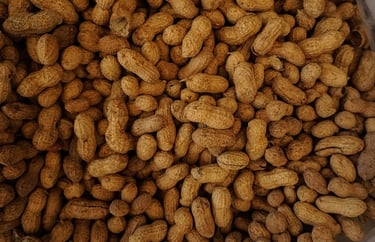Food allergies: how to manage them?


Food allergies occur when a protein from food enters the bloodstream via the intestinal mucosa
The immune system then reacts, and the protein becomes undesirable not only in the blood, but throughout the digestive tract. Very often, food allergies in children develop into respiratory allergies in adulthood. This makes it all the more important to try to prevent and treat them.
A classic food allergy, involving IgE antibodies, takes place in two phases. In the sensitization phase, on first contact with the protein, acquired immunity kicks in, and our lymphocytes produce antibodies which bind to histamine-rich cells. In the trigger phase, from the second contact with the same protein, these cells release their histamine, triggering allergy symptoms. These can be cutaneous (e.g., dermatitis), digestive (e.g., abdominal pain after eating), respiratory (e.g., otitis), or a combination of these categories. Among skin symptoms, angioedema can be fatal if it affects the larynx. There may also be anaphylactic shock, i.e., a generalized vasodilatation of the vessels leading to circulatory failure, which can be fatal if an injection of adrenaline is not rapidly administered.
In the case of delayed food allergies involving IgG antibodies, where symptoms are not immediate and diagnosis is therefore more difficult, care must be taken with IgG blood measurements, since if they are positive for several foods, this may be a sign of intestinal hyperpermeability, which needs to be checked. What's more, this is not an infallible method: measurements are taken in vitro, outside the body, and there are different classes of IgG, not all of which are necessarily markers of allergy. Finally, the food proteins used as reagents may not be the most suitable. The proof is in the pudding: you can get different diagnoses depending on the laboratory carrying out the analysis. So, it's best to rely on the results of temporary avoidance, followed by the reintroduction, one by one, of foods to which an allergy is suspected.
To try and avoid food allergies, it's a good idea to start by giving probiotics to pregnant and breastfeeding women, and to weaned infants. Exclusive breastfeeding is recommended up to four months of age, and infants should never be given proton pump inhibitors (PPIs) to prevent acid reflux.
There are currently three possible ways of treating food allergies, although alternatives are currently being developed, based in particular on the transfer of fecal microbiota:
Try to circumvent the allergy by breaking down the protein into peptides, or even amino acids, by puréeing, liquidizing and/or cooking the food.
Stop eating the food, avoid dust mites and smoking (both active and passive) and treat the microbiota by consuming enough pre- and probiotics. After three or four months, try the food again to see if the allergy has disappeared.
Desensitize the body by ingesting very small quantities of the food and gradually increasing the dose. This is known as "oral immunotherapy". This approach is more likely to work if accompanied by probiotics.
In the case of cow's milk allergy, several proteins may be involved, but most frequently it’s beta-lactoglobulin. There is often a family history of the condition, and it often resolves spontaneously. As I’ve just emphasized, the most reliable diagnosis is to stop consuming cow's milk altogether and to observe the cessation of symptoms, as well as their resumption in an oral provocation test a few months later.
To find out more, also read these articles:
On intestinal hyperpermeability, which can lead to allergies: https://isabellemaesnutrition.com/en/dysbiosis-hyperpermeability
About celiac disease: https://isabellemaesnutrition.com/en/celiacdisease
Peanuts picture by Tom Hermans
